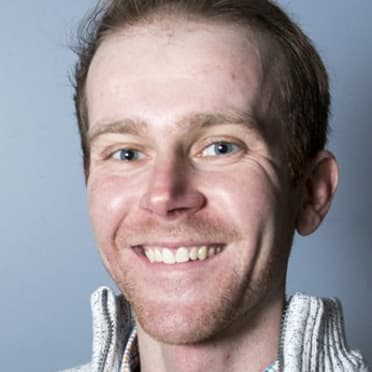Jarred Kelenic has made it very clear that he believes he’s ready to make his Major League leap. But he also acknowledges that he has felt this way heading into Spring Training each of the past two years and conceded that his timeline is out of his control.
So, after calling 2020 “definitely frustrating” because of the cancellation of the Minor League season and his stalled development, what would it take for ‘21 to be positive?
“I think there's a lot of things that need to happen for it to be a successful 2021,” Kelenic said on Wednesday during the Mariners’ Virtual Baseball Bash. “I want to be able to get up in the big leagues and help the team win ... being better than you were the day before. I think that still applies to the Mariners being better than they were the year before. So I think that a successful 2021 is going to be that I can get up and help the team win and we can compete for a playoff spot and then some, and be better than we were the year before.”
The Mariners’ No. 1 prospect, per MLB Pipeline, said he’s all systems go for camp and has maintained his same offseason routine, training back home in Wisconsin. Left field has been in limbo for the Mariners all offseason in part because it’s Kelenic’s position in waiting. And with Seattle’s roster construction slated for 14 pitchers, the club might not carry a fourth outfielder. Kelenic likely would have made his debut late last season had he accumulated more Minor League development. Kelenic had a .291/.364/.540 slash line with 23 homers while playing for three Minors affiliates in 2019, topping out at Double-A Arkansas.
All of this points to Kelenic joining the team sooner than later, and general manager Jerry Dipoto indicated as much last week. Director of player development Andy McKay echoed that sentiment on Wednesday.
So if Kelenic is not in the Majors on Opening Day, then where will he be? The club wants to adequately assess where Kelenic stands in his development. He oozes with potential and soared in 2019, but he has played in just 21 games above Class A Advanced. That would be a big leap, and the Mariners don’t want to leave any doubt that Kelenic is completely ready when they call him up.
“I think anything between Double-A, Triple-A and the big leagues is a realistic conversation for parts of 2020,” McKay said. “Our focus and my focus with Jarred has always been, we all know where this is headed. It's about being where his feet are embracing the grass and finding a way to get better wherever he is. I think he's done that. He did it last year very well.
“I think it'll reveal itself in Spring Training. I think he'll show up and begin to answer that question a little bit for us.”
Another factor in play could be Kelenic’s service-time clock. If Kelenic is in the Minors until April 17, the Mariners would retain an extra year of club control. Players must accrue six years of service time to reach free agency.
Asked about service time on Tuesday, the often-outspoken Kelenic expressed more self-preservation than in the past, perhaps a sign of maturity.
"I'm just going to go out and play as hard as I can,” Kelenic said. “It's out of my control. Whatever happens, happens. I know it's a cliché answer, but it kind of applies."
Logan Gilbert, the club’s No. 4 prospect, is in a similar situation for all the same reasons. He would have reached the Majors last summer, earlier than Kelenic, and could have been a key contributor down the stretch, having built up his innings to 135 in 2019. But he finds himself hanging in an innings limbo after pitching on a six-day program at the alternate training site in Tacoma, capping out at five to six innings by season’s end.
Innings allocation will be one of the Mariners’ most pressing concerns throughout 2021 -- and likely into ’22, even among the club’s most established pitchers. The club’s caution, need for reinforcements and plans for a six-man rotation are why Gilbert will enter camp vying for a legitimate shot with the club. That, and he excelled with a 2.13 ERA and 165 strikeouts (11 per nine innings) while surging up three Minor League classifications in '19. The fastball-heavy pitcher will enter camp bringing more conviction with his secondary pitches after treating that as his chief objective in Tacoma last summer.
“The main thing is just consistency at this point,” said Gilbert, who is training at the Florida Baseball Ranch in Central Florida. “That's what really stuck out to me in Spring Training last year, especially watching guys like Marco [Gonzales]. That's probably the best example you'll find in the Major Leagues of the consistency of location and the way he attacks. Pretty much every time he throws a pitch, he knows exactly what he's going to do.
"I think that's a never-ending goal. You refine it more and more, and, hopefully, every year my pitches can become a little more consistent in the way that I attack hitters.”
Because Gilbert couldn’t build up his workload or test his stuff against external competition, he utilized the time to better understand and dictate his pitch usage while establishing more conviction in his secondary offerings. Kelenic said he benefited from seeing Major League pitching, calling it “reassuring” to see results against proven arms.
While both were frustrated that their debuts were on hold, the two key cogs in the Mariners’ rebuild bonded as locker neighbors. Healthy competition, albeit in simulated games and not on an everyday basis, abounded, with the two squaring off regularly.
Here’s Kelenic on Gilbert: “Whether he beat me or I beat him, we would sit down and kind of walk through the at-bat, and I would ask him, did I show you something in my take for you to throw me a pitch in this count? And then he would ask questions to me like, ‘Why were you sitting on this pitch?’ or something like that. And it was really beneficial considering the fact that Logan is extremely talented and smart.”
And Gilbert on Kelenic: “He's a really great hitter, and I think the way he competes is even better. That’s just who he is in the box. It's really tough to keep finding new ways to try to show him things I might not have. I think towards the end, every time he came up to bat, I was showing him all four pitches just because I didn't want to keep going back to the same pitch over and over again. So, that's just a fun battle right there, finding a way, challenging each other to try to get the upper hand.”


